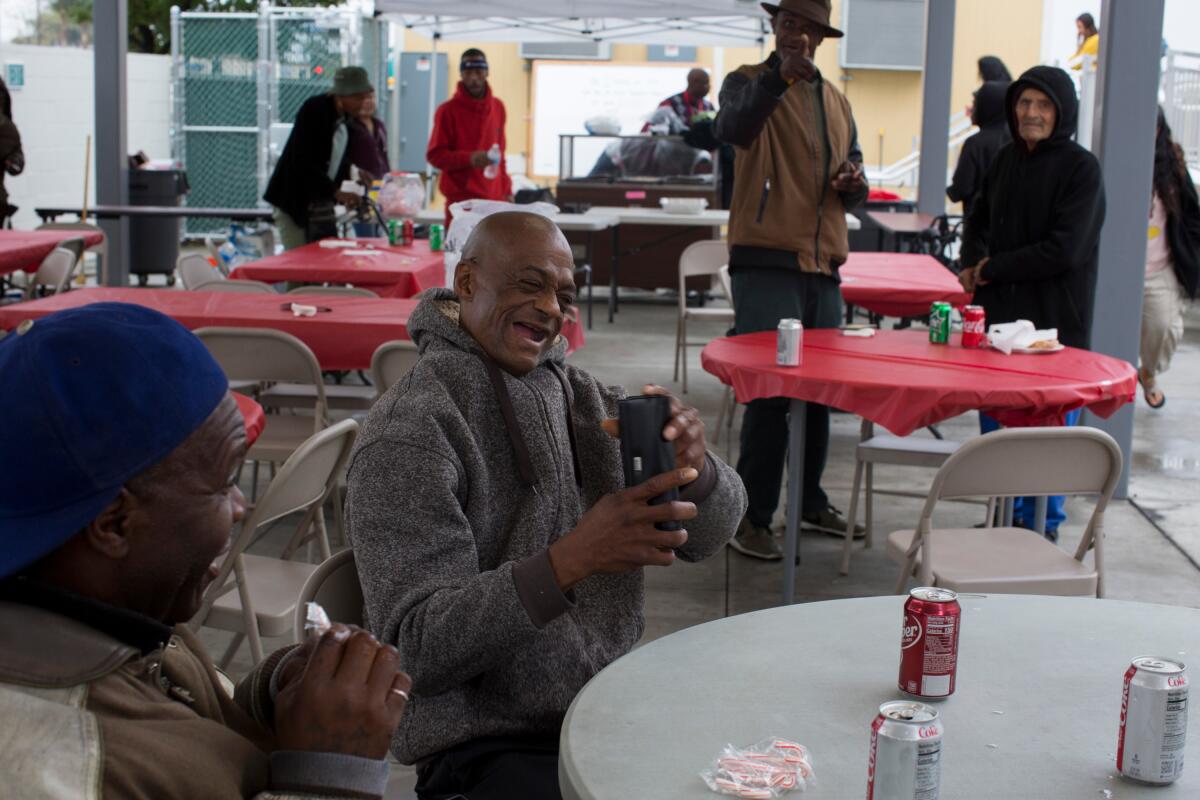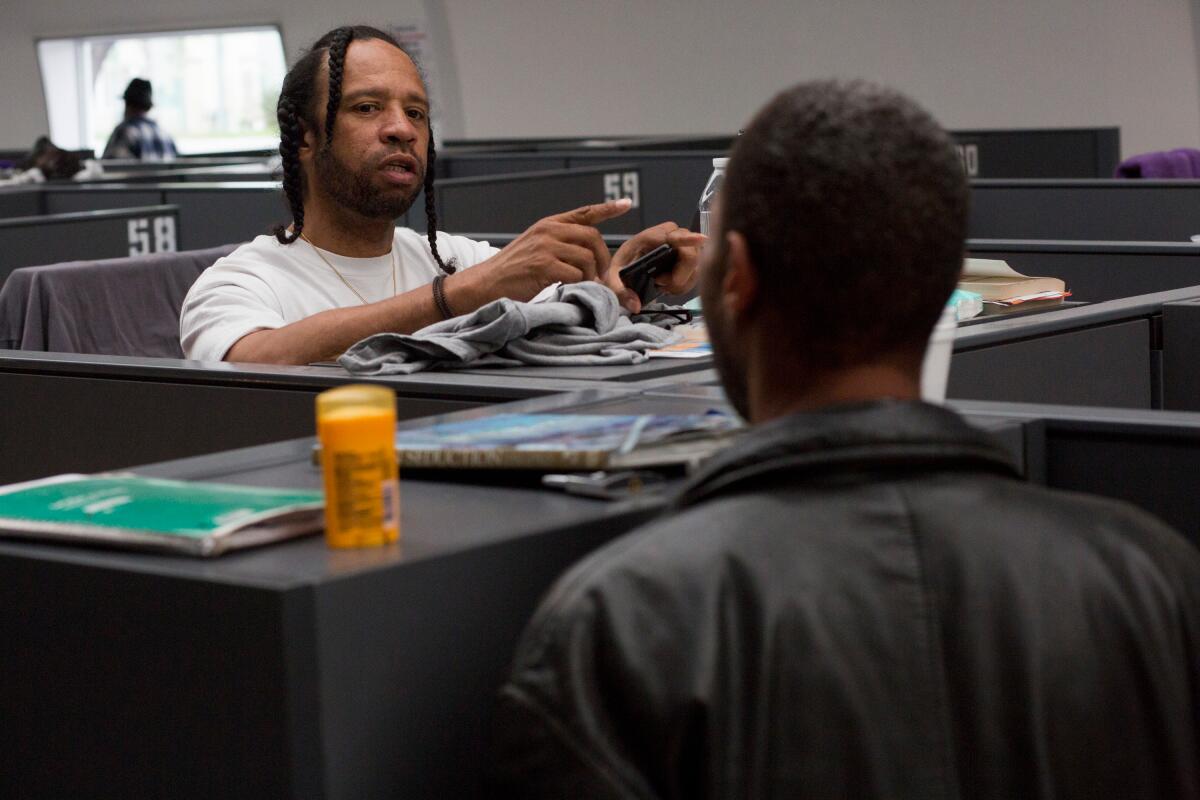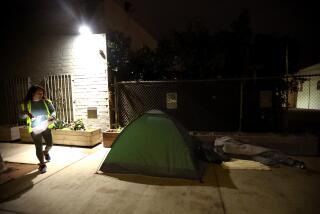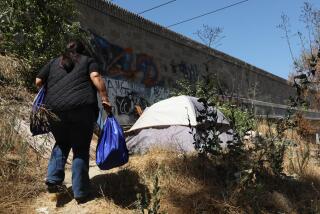Watts residents were skeptical, but L.A. just opened a new homeless shelter anyway

Councilman Joe Buscaino welcomed 100 homeless people to an early Christmas luncheon at the city’s newest homeless shelter in Watts with great cheer, but also great frustration.
The $5.4-million facility, which brings the total number of shelter beds available under the mayor’s A Bridge Home program to more than 500, took 17 months to open. And that was after years of outreach to residents by Buscaino’s office and homeless advocates to quash dissent, he said.
“We had 150 community meetings to convince people this is a good idea,” Buscaino said on Monday, gesturing toward the tables of people on the patio, mercifully sheltered from the rain, laughing and chatting over plates of pasta and pizza. “This works ... but it’s taking too long.”
The 100-bed shelter opened in late November in a reinforced tent structure on Imperial Highway in Watts and it filled quickly.
Nearly all the residents of the new shelter are black — a testament to both the over-representation of African Americans in Los Angeles County’s homeless population and to Watts, which is now 70% Latino, once being a hub of the city’s black community.
African Americans are about 9% of the population in the county but about 40% of its homeless population, the result of systemic discrimination in housing and employment, a report from the Los Angeles Homeless Services Authority found last year.
Unlike other shelters in South Los Angeles, the new Watts shelter is open around the clock, residents are guaranteed beds and pets are allowed. It’s operated by the Salvation Army, which oversees counseling, case management and other services.

Under the A Bridge Home program, Mayor Eric Garcetti had vowed to build a homeless shelter in every City Council district. As of last month, after some resistance, nine shelters had opened with a total of more than 500 beds and 14 of 15 council members had committed to having at least one shelter in their district.
In Watts on Monday, many of the residents at the lunch were older — veterans of the 1965 Watts riots, even — and described serious mental and physical health problems.
Samuel Harris Jr., a former security guard and carnival worker, said he missed the days of rioting but participated in post-riot civil rights work. But a spinal injury left him unable to walk for a decade. He had an apartment in a building for seniors for a while, but became homeless, he said, after two separate landlords tried to cheat him out of rent money.
Other residents found themselves on the streets after completing long prison sentences, among them Patrice Wallace, who moved into a friend’s car after her halfway house program ended.
“When your time’s up in the program, you had to leave,” she said. “Cold is not the word. I thought I was going to die.”
Arianna Medina, 25, said she has been on the streets on and off since she was 18, largely because of drug addiction and family and mental health problems, she said.
After sleeping in tents and at motels from San Bernardino to La Puente to Echo Park, she now stays at the shelter in Watts with her boyfriend. She said she’s seen things she wishes she’d never seen, among them rats bigger than opossums.

“I’m 25 and I feel like a 40-year-old woman,” said Medina, who is now attending Narcotics Anonymous. “There are people here 40 or 50 or even 60 still on drugs. I don’t want that. I want to have grandkids. I want the white picket fence. I want to be someone.”
Buscaino, who represents the harbor communities as well as Watts, said he has other shelters in the works in Wilmington and San Pedro. But he said red tape is bogging down the projects.
Buscaino was elected president of the National League of Cities last month, and has promised to push homelessness to the top of the agenda.
“Each and every one of us here is trying to get some help,” Wallace said. “Why not try to help those who are helping themselves?”
More to Read
Start your day right
Sign up for Essential California for news, features and recommendations from the L.A. Times and beyond in your inbox six days a week.
You may occasionally receive promotional content from the Los Angeles Times.







